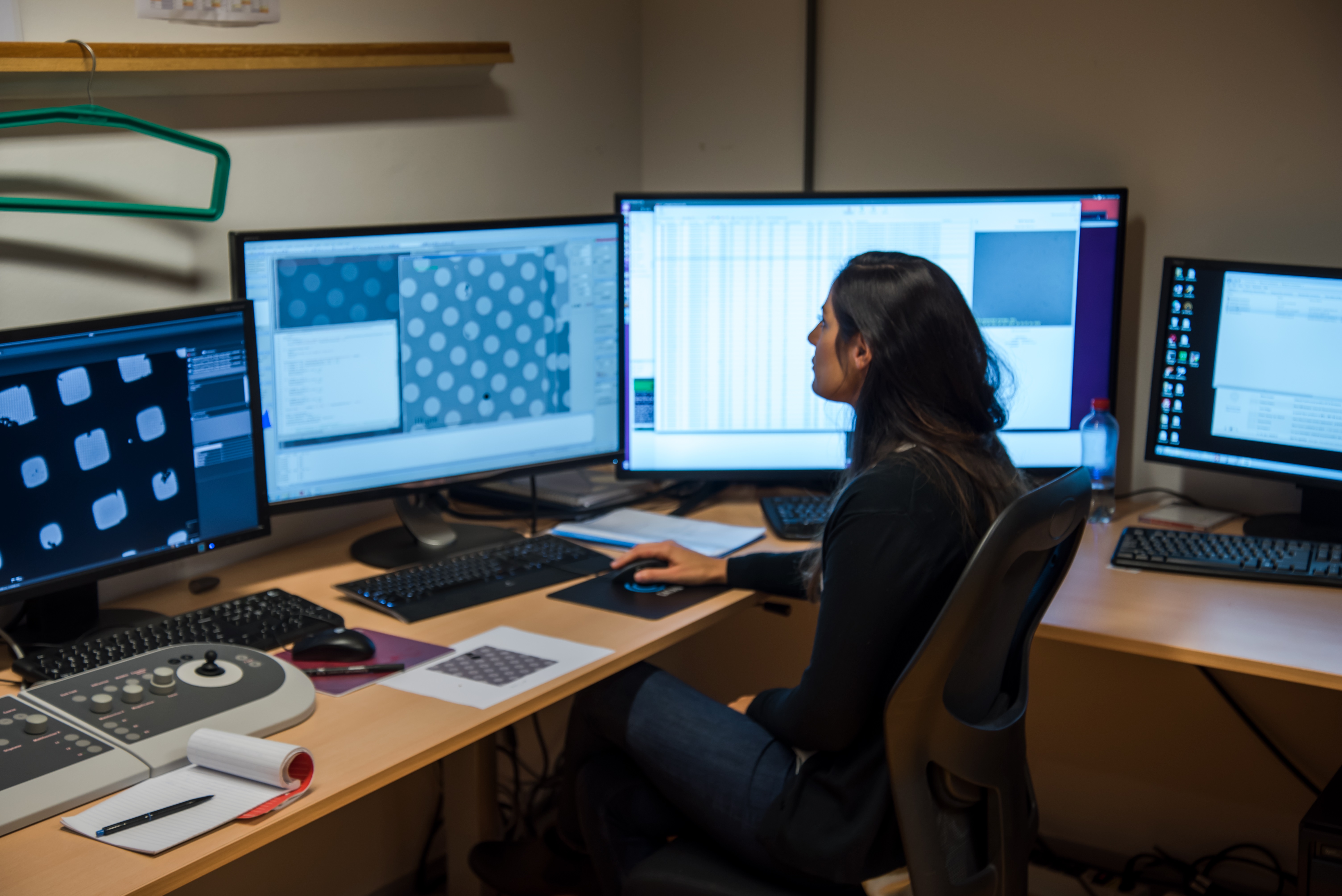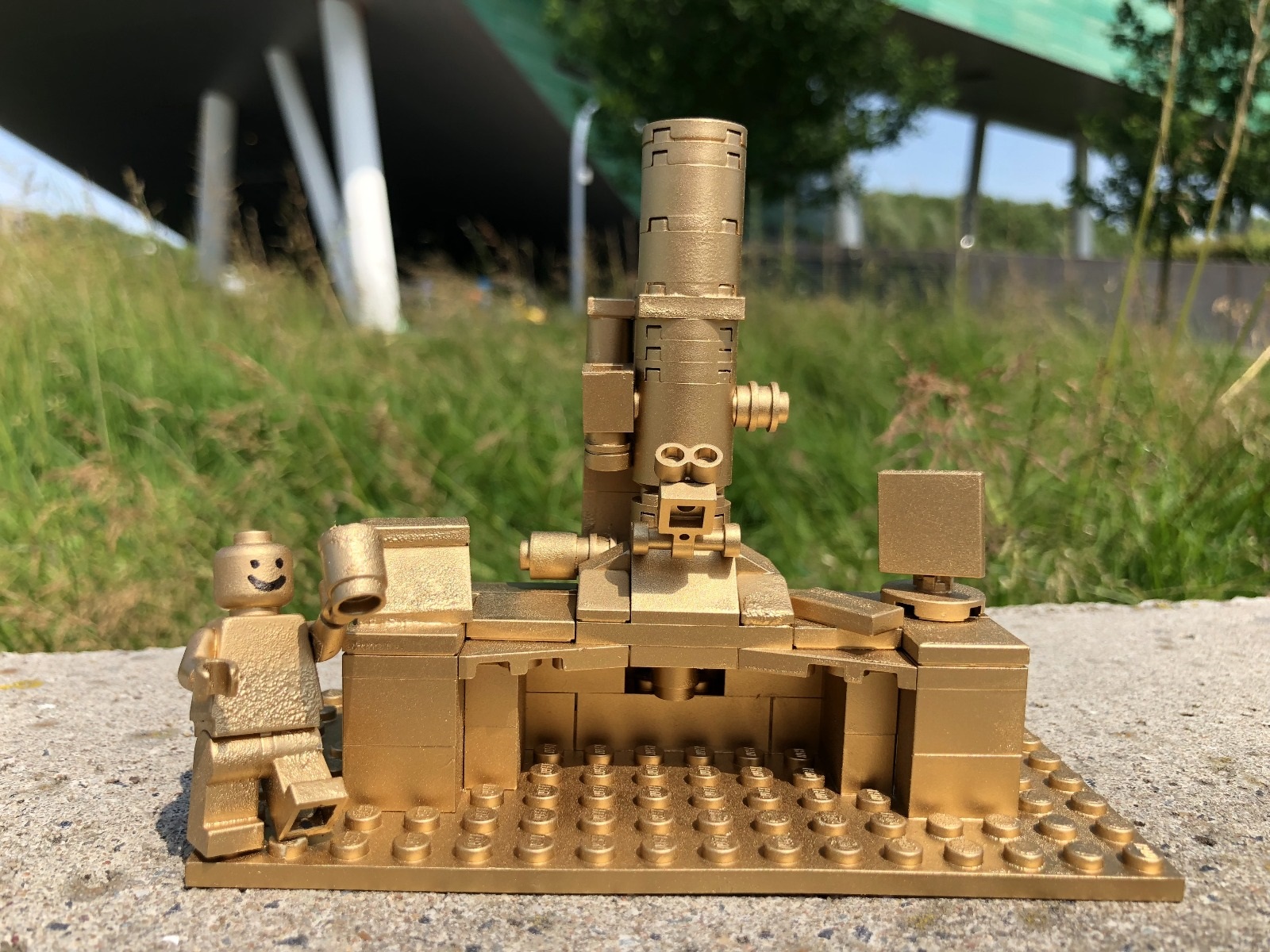Cristina Paulino is an assistant professor and head of the electron microscopy unit at the University of Groningen, The Netherlands. Her interest in membrane proteins began during her undergraduate years and has continued ever since. Her work focuses in understanding the structure-function relationship that underlies the mechanism of transport of membrane proteins.
Growing up, none of Cristina Paulino’s family members were involved in science. She comes from a Portuguese lower-middle class family; her father was a waiter and in between jobs managed his own café with the assistance of her mother. Although born in Germany as a first-generation immigrant, her family moved back to Portugal where she was raised for most of her youth. They later relocated back to Germany where she finished secondary school. Paulino’s interest in science stems back to her early childhood, when she was quite vocal in school. She recalls that her teachers had a hard time with her, as she asked many questions regarding the subject at hand.
“I was mostly interested in chemistry and when I had to choose what exactly to study I decided to go for a biological application of chemistry and studied biochemistry,” says Paulino. She obtained her bachelor’s and master’s degrees in biochemistry in 2006 and 2008, respectively, from the Heinrich-Heine University in Düsseldorf, Germany. “This is when I also became interested in biophysics and structural biology,” she recalls and she decided to explore it further as a PhD student at the Max-Planck-Institute of Biophysics in Frankfurt, Germany. For her postdoctoral work, she joined the lab of Raimund Dutzler at the University of Zurich, Switzerland, in 2014. “There I setup the technique of high-resolution single particle cryo-electron microscopy, which we then successfully employed to study membrane transporters and channels.”
Paulino’s fascination with membrane proteins emerged during her undergraduate years and has persisted ever since. Her training and interest in cryo-electron microscopy (cryo-EM) started during her PhD. “At this point EM was not perceived as a relevant technique in structural biology and we were often called ‘blobologists,’ referring to the low-resolution densities we obtained.” Her PhD supervisor and mentor Werner Kühlbrandt, who is one of the pioneers in the cryo-EM field, noted Paulino’s inclination for challenges which then created a path for her journey. She was a well-trained electron microscopist by the time her PhD studies were complete, but she had also noticed that the field had changed. “Suddenly, what we could achieve with cryo-EM was mind-blowing, making it an indispensable technique in structural biology.” She said “Being one of the few people from the ‘old cryo-EM generation’ obviously helped, our expertise was in high demand and a whole new level of research questions [were] waiting to be answered.”
Paulino currently serves as an assistant professor on a tenure-track, and is also the head of the electron microscopy unit and facility at the University of Groningen, The Netherlands. In her group, she focuses on understanding the structure-function relationship that underlies the mechanism of transport of membrane proteins. A colleague of Paulino, Dirk Slotboom, a professor in structural membrane biology in Groningen, admires her professionalism and hard-working demeanor. “Cristina does not [like] cold weather, yet she pushed her boundaries on a cross-country skiing trip in the Swiss Alps during [a] lab retreat. She almost collapsed, but pulled through. Yet another sign of her not giving up,” says Slotboom.
Bert Poolman, the director of the Groningen Biomolecular Sciences and Biotechnology Institute, whom Paulino had the pleasure of meeting at a European consortium of researchers several years ago, says “Cristina is a critical, demanding, energetic, fantastic colleague; always enthusiastic and extremely good in stimulating and challenging people.” Despite her young age, he believes that “Cristina already is very mature as [a] group leader.” Despite not having had a working relationship with her in the past, Poolman was impressed with her former work and urged Cristina to apply for the assistant professor position in cryo-EM at Groningen. During the summer of 2017, she supervised the institution’s purchase of a state-of-the-art microscope and Poolman had ta ken notice of the images that she was able to obtain. “[She] has produced fantastic structures from the moment the microscope was made operational. Cristina and I have recently obtained very exciting insights into the structure of a very complex membrane protein, which we hope to publish later this year.”
ken notice of the images that she was able to obtain. “[She] has produced fantastic structures from the moment the microscope was made operational. Cristina and I have recently obtained very exciting insights into the structure of a very complex membrane protein, which we hope to publish later this year.”
Paulino advises young people who are starting their careers out in biophysics to “find their passion and always have fun doing your work. Network, communicate, find a mentor and an advocate.”